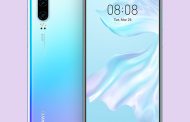Galaxy Note 9 was officially released, and on its initial inspection, it appears as if it is the Note 8. There are very few changes that Samsung has made from the previous Note 8. There are some truth behind this, but just take a close look, you will realise that there are notable upgrades beyond the attractive price.
Design and size- Differences in The Details
Give someone Galaxy Note 8 and Galaxy Note 9, he or she will find it not easy to tell the difference, though the person may be able to notice some differences in the size and weight:
- Galaxy Note 8
162.5 X 74.8 X 8.6mm (6.40 X 2.94 x 0.35 in), 195 g (6.88 Oz)
- Galaxy Note 9
161.9 X76.4 X 8.8 mm (6.37 X 3.01 X 0.35 in), 201 g (7.09 Oz)
Though it can be viewed as a surprise for a smartphone to get thicker and heavier, these should be considered to be minor differences. Especially, by taking a consideration to the wider display and much larger battery.
Away from dimensions, there are some new tricks which Samsung has added: At last, there are stereo speakers which have been tuned by AKG with Dolby Atmos branding, though the latter appears trivial given that stereo speakers cannot truly create Atmos audio. Also, below the rear camera is a fingerprint sensor which is sensibly positioned, this is a notable move which Samsung has made with the Galaxy S9.
Another major change that can easily be noted is the S-pen. This bright yellow stylus is Bluetooth enabled and it marks the first time that Samsung has equipped the Galaxy series with a Bluetooth LE which enable user to perform some far greater functionalities such as a clicker when presenting, a music playback control and a remote shatter operation for the camera.
There is also a super capacitor for charging this new S-pen directly from the Galaxy note. This makes the stylus to be very ready and it drains very little power from the Note battery. The only feature that makes this stylus to be the same as the one in Note is its 4,096 levels of pressure sensitivity, but it was more than the required.
Display- the ever biggest screen from Samsung
Though this may not be a large step ahead, but one of the notable features found in Galaxy 9 is the biggest display that has ever been fitted into a mass market smartphone:
- Galaxy Note 8
6.3-inch, Super AMOLED, 18.5:9 aspect ratio, 1440 x 2960 pixels (521 ppi pixel density), 83.2% screen-to-body ratio, Corning Gorilla Glass 5, HDR10.
- Galaxy Note 9
6.4-inch, super AMOLED, 18.5:9 aspect ratio, 1440 x 2960 pixels (516 ppi pixel density), 83.4% screen-to-body ratio, Corning Gorilla Glass 5, HDR10.
Apart from this, the other notable feature are slightly lower pixel density and fractionally higher screen to body-ratio. Samsung has retained the same native resolution on the wider display. But doubtfully, most users are unable to notice these changes. The company has not explained in details about the panel upgrade, but the display is expected to be very bright with more colour accuracy than as it is in Note 8.


















